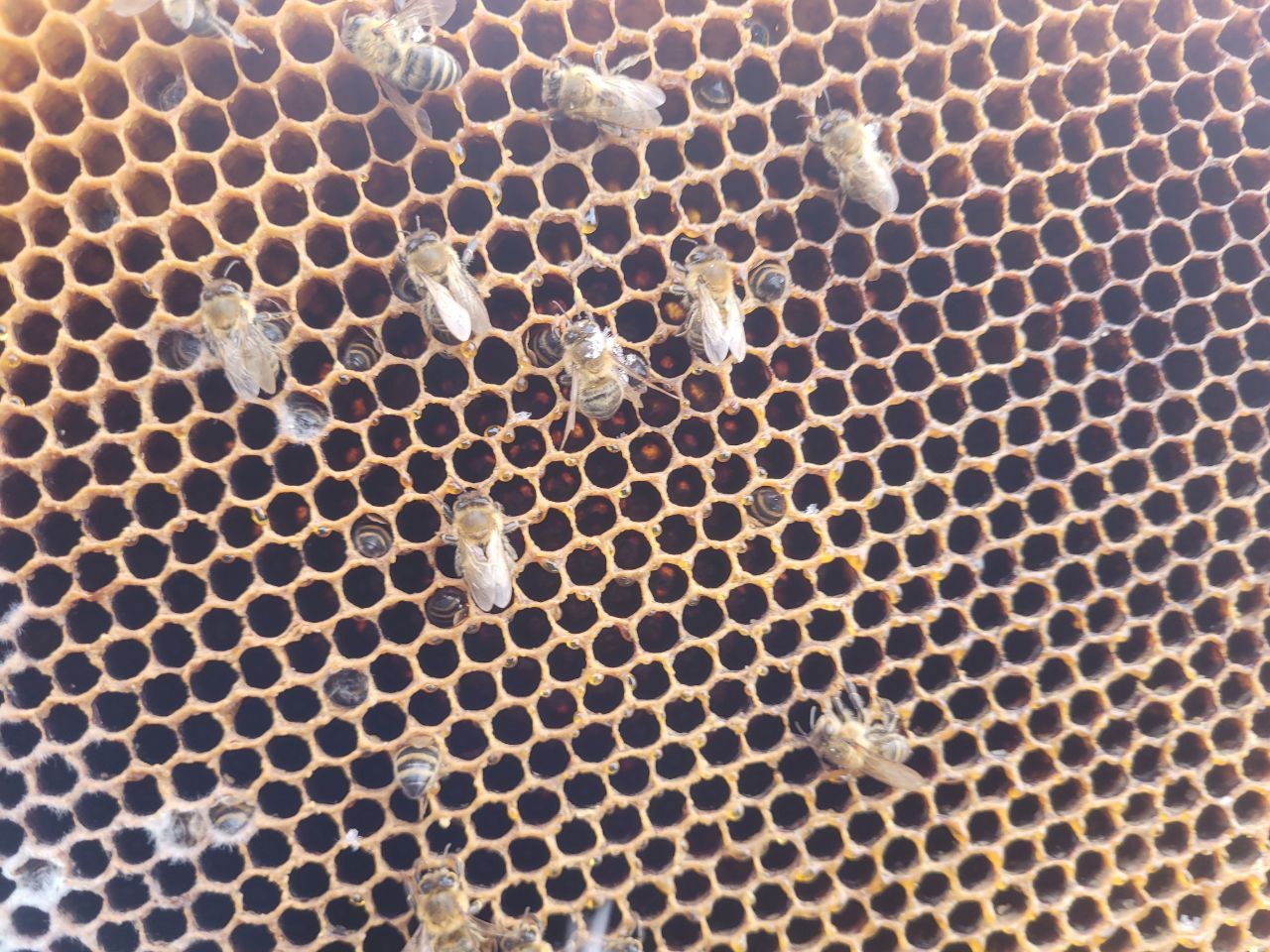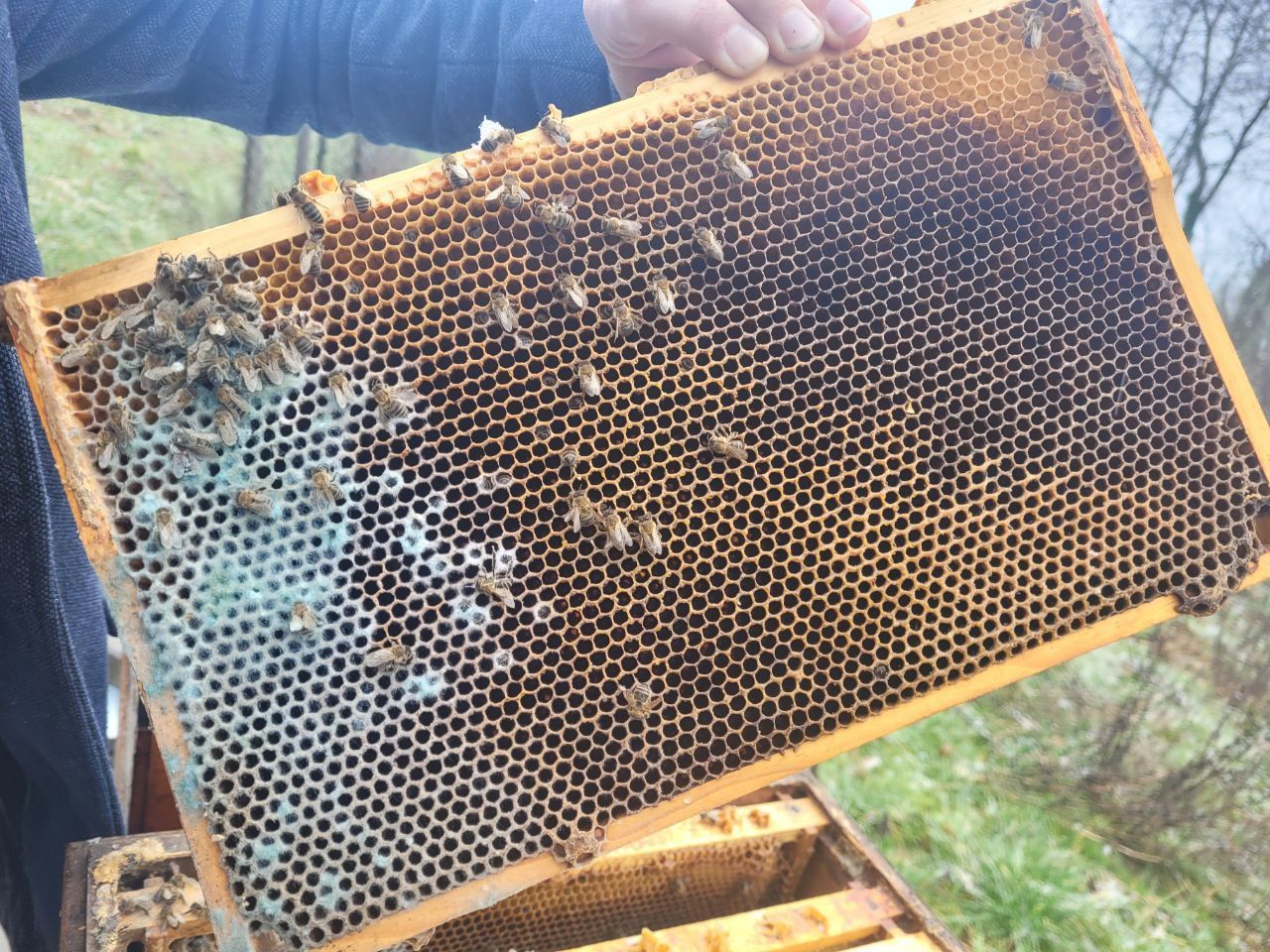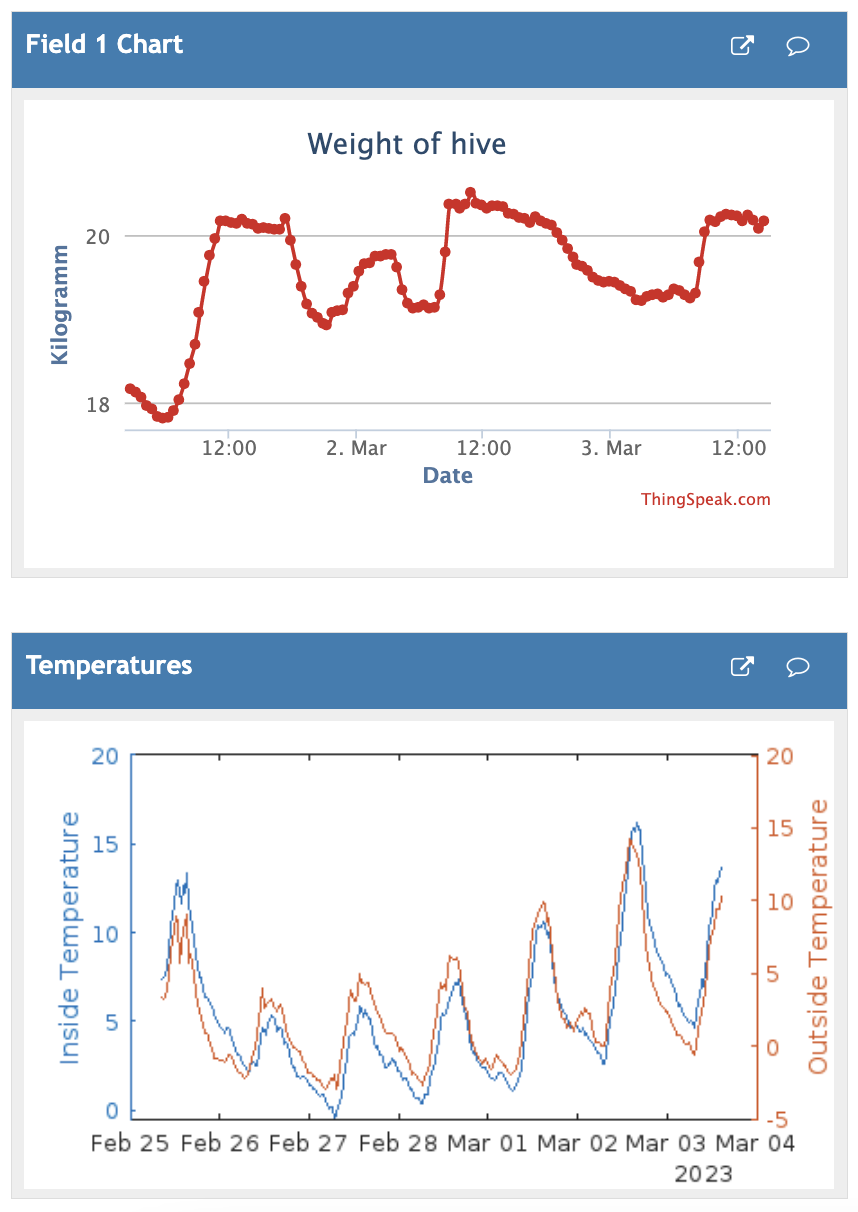Diesen Artikel auf Deutsch lesen
"Rise and shine!" - Although this may sound like a typical morning in a child's bedroom, we are actually in our Seibert field right now calling out to our bee colonies.
After a cold and gray winter, April is now here: the days are getting brighter, the sun is getting stronger and nature all around is awakening to new life. But our honey bees don't really need to wake up. Unlike most insects, they don't hibernate.
Huddle up!
In late summer and fall, the so-called winter bees hatch. Unlike their spring and summer siblings, they have no explicit collecting and building mission. Their main task is to ensure the bees' nest and its queen survive the winter. In concrete terms, this means keeping the internal temperature in the hive at a minimum of 10° degrees Celsius (50° Fahrenheit). To do this, the winter bees form a sphere - the bees sitting outside vibrate their flight muscles, which can generate temperatures of up to 30 degrees Celsius (86° Fahrenheit). During this process, they regularly switch from being inside and outside of the sphere.
This is not an easy job; it requires a lot of energy in the form of sugar. The bees normally obtain this from the honey they collect or - if we as beekeepers have harvested it - from the sugar syrup the bees are fed in the fall. It is exactly this way of life that makes honey bees interesting for us humans. This job specification has a clear advantage, the winter bees’ life expectancy is higher than that of summer bees. Winter bees live three to four months, while summer bees, with their back-breaking job, live about four to five weeks.
How are our bees doing now?
Every year, all beekeepers in Germany ask themselves: "Has the food been enough over the months? Did enough winter bees make it? Are the colonies still alive?" Frequently opening the hive lids is very tempting to satisfy one's curiosity - but of course it is highly counterproductive. Why? With each opening, the accumulated heat dissipates within a few seconds. A quick peek into the colony is unfortunately a widespread phenomenon among new beekeepers that can kill the bees.
Now with the weather getting warmer, we can see inside the beehive hole how our protégés are doing. The first bees come out to clean themselves (as you can imagine, there are no toilets in the hive) and to look for the early blooming flowers. First on the buffet table are often snowdrops, hazel and sal willow which provide protein in the form of pollen. The colony needs this to supply the first generation of new workers, which is now slowly hatching and replacing the winter bees.
This is a very exciting and critical phase in the bee year: If our queen starts laying eggs too early because of a mild winter and there are then prolonged cold spells, then the bees use up too much energy and cause the remaining food in the combs to rapidly run out and the bees could starve. Unfortunately, one of our colonies already starved to death in mid-February and did not survive the winter. The other four colonies have managed better with their food and are already slowly going back into the spring-swing of things.
I, Tom, am currently monitoring the four colonies closely and am ready with honey powdered sugar rations in case of emergency. All of them look very good at the moment and we are confident that they will develop into large and strong colonies in the next two months.
Starting this month, Seibert Media colleagues will also be able to come back to the field and take a peek at my beekeeping as well. (Note: We can hardly wait! 🐝)
Easily check the current state of our hives
If you feel like following the development of queen bee Elizabeth III and her state live, take a look at our Grafana dashboard.
Our HoneyPI is back online and regularly radios the weight as well as the outside and inside temperature to us. Here you can follow how the mass slowly but steadily increases over the next weeks. Of course, this is not yet honey, but the first generation of hatching and growing worker larvae.





